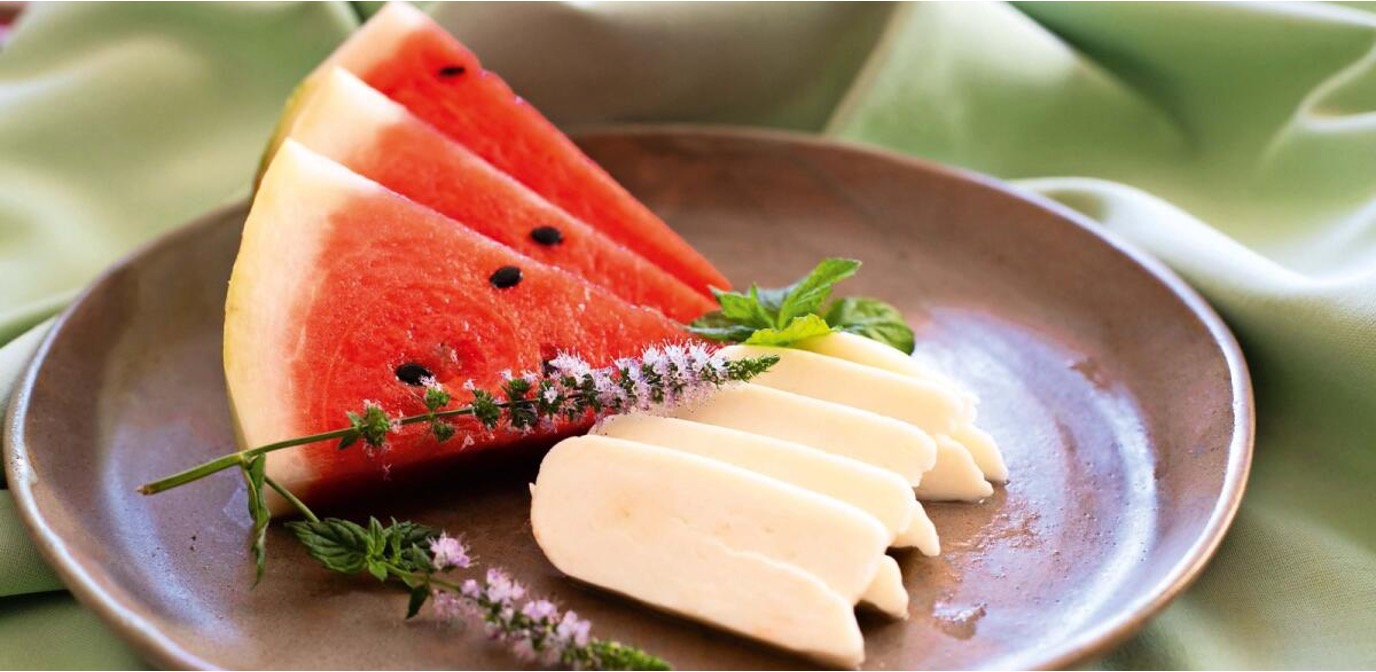Halloumi, for which Cyprus is justly famed for centuries, was produced by families and consumed as an essential part of their daily diet. It has now become a runaway success with international cheese buyers.
White, semi-hard Halloumi is made from sheep’s or goat’s milk or a mixture thereof, with or without cow’s milk. Originally, it was soaked and preserved in brine, a process which gave the cheese its salty taste and enabled it to be kept for long periods.
Following the massive success of Halloumi, it is now manufactured on an industrial scale by modern producers using the latest technology; vacuum packaging has been introduced and widely used, while the more traditional techniques are still maintained on a smaller scale.
Halloumi has secured a world-wide market, with large consignments being despatched regularly to continental Europe, Scandinavia, Australia, the Middle East and the USA. This springy-textured cheese is unique to the island. The flavour of Cyprus Halloumi is the result of a combination of uniquely Cypriot factors such as the warm climate and the fodder that the island produces for Cyprus-bred sheep and goats. The uniqueness of this product has proved an important factor in its success both at home and abroad. It’s worth noting, though, that while Halloumi may lead Cyprus’ dairy export drive, it’s by no means alone in the dairy market.
Dairy is big business on the island, with some of the larger dairies producing cheeses such as fresh (salted/unsalted) or dry Anari, as well as yoghurt, cream, smoothies and flavoured milk products. Halloumi may dominate Cyprus’ food exports but the island produces a wonderful and always appetizing array of food and drink, all with proven appeal for consumers in every corner of the world.

Crispy Halloumi cheese sticks Fries with Chili sauce for dipping.
Halloumi is registered in the EU as a Community Collective Trade Mark at the European Union Intellectual Property Office (EUIPO) and as a Collective Trade Mark in Jordan, Qatar and the UK and as a Certification Trade Mark in the USA, Cyprus, Egypt, Syria, Oman, Saudi Arabia and South Africa, while efforts are underway for its registration in Australia, China, Japan and the United Arab Emirates.
On April 12, 2021, the European Commission registered (Halloumi) / Hellim’ as a Protected Designation of Origin (PDO), protecting, as of 1st October, 2021 the valuable name against imitation and misuse across the European Union (EU).
The name (Halloumi) / Hellim’ is now in the register of protected designations of origin and protected geographical indications.
Only (Halloumi) / Hellim’ produced on the island of Cyprus and according to the traditional recipe can now be marketed in the EU under that name.
Halloumi fries in minutes
INGREDIENTS
> 250gm halloumi
> Sunflower oil — for frying
> 4 table spoon polenta
> 1 table spoon za’atar spice mix
> Drizzle of greek yogurt (optional)
> Chopped fresh coriander
> Chopped red chillies for garnishing (optional)
> Sweet chilli sauce
INSTRUCTIONS
Cut the halloumi into fingers, drizzle with a little sunflower oil, then toss in a bowl with the polenta combined with the za’atar spice mix until well coated.
Heat sunflower oil in a medium heavy-based saucepan.
When hot, shallow fry the halloumi pieces until the polenta turns crisp and the cheese becomes soft and oozy, turning when one side is golden.
Serve with a drizzle of greek yogurt and sprinkle with red chillies or pomegranate seeds and chopped fresh coriander, with sweet chilli sauce on the side for dipping.
Source : Khaleej Times Dec 29th 2023

